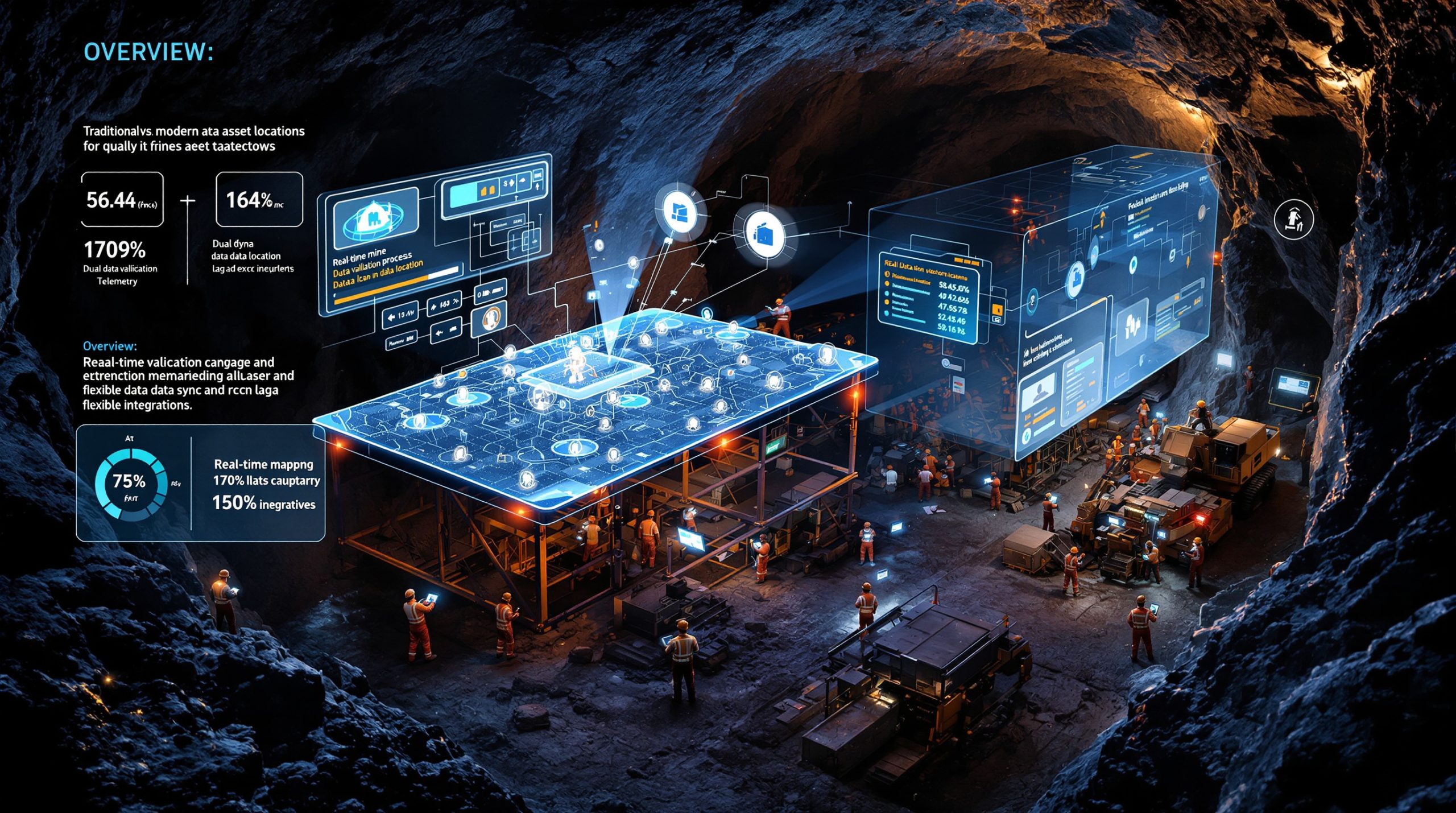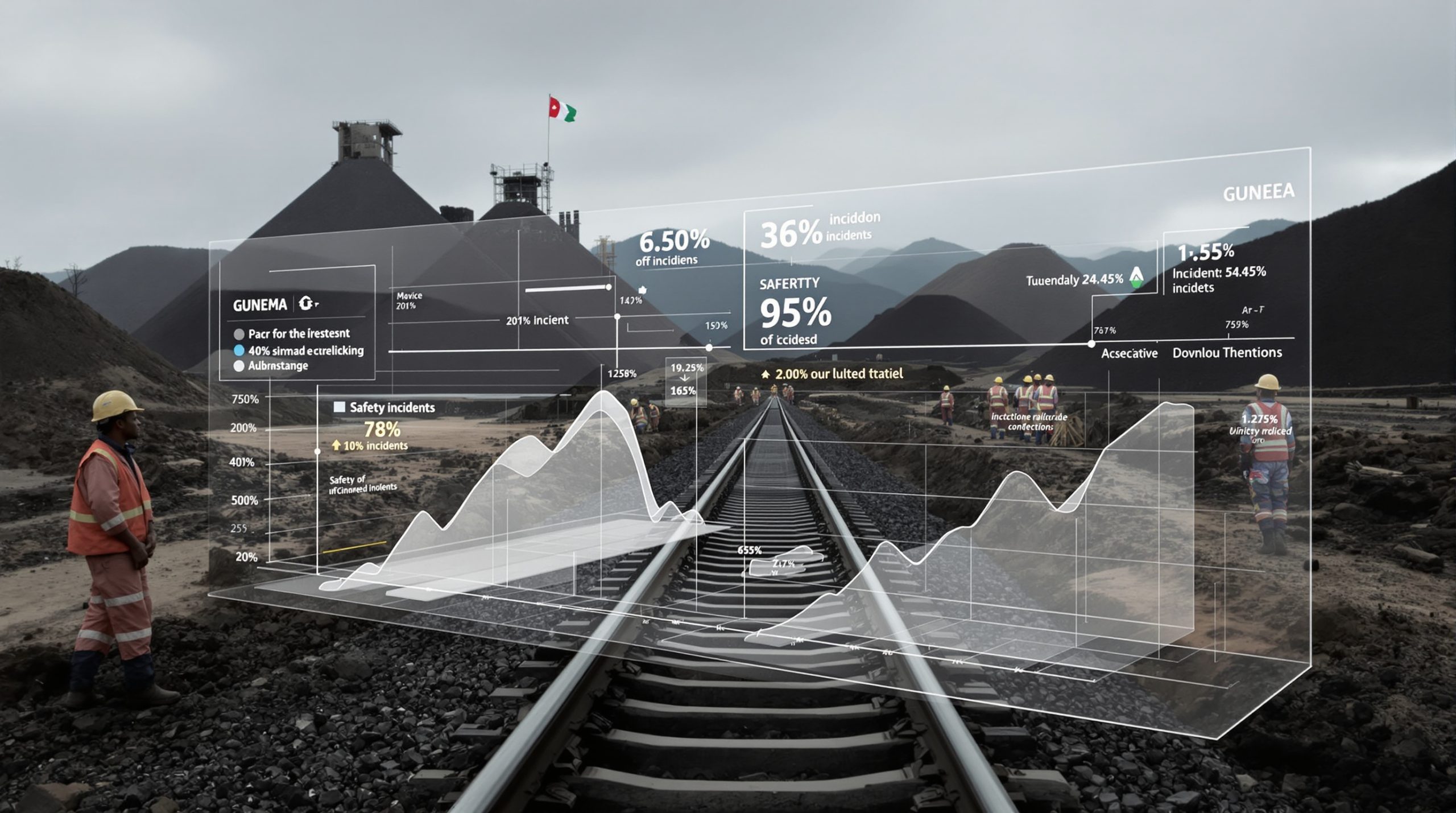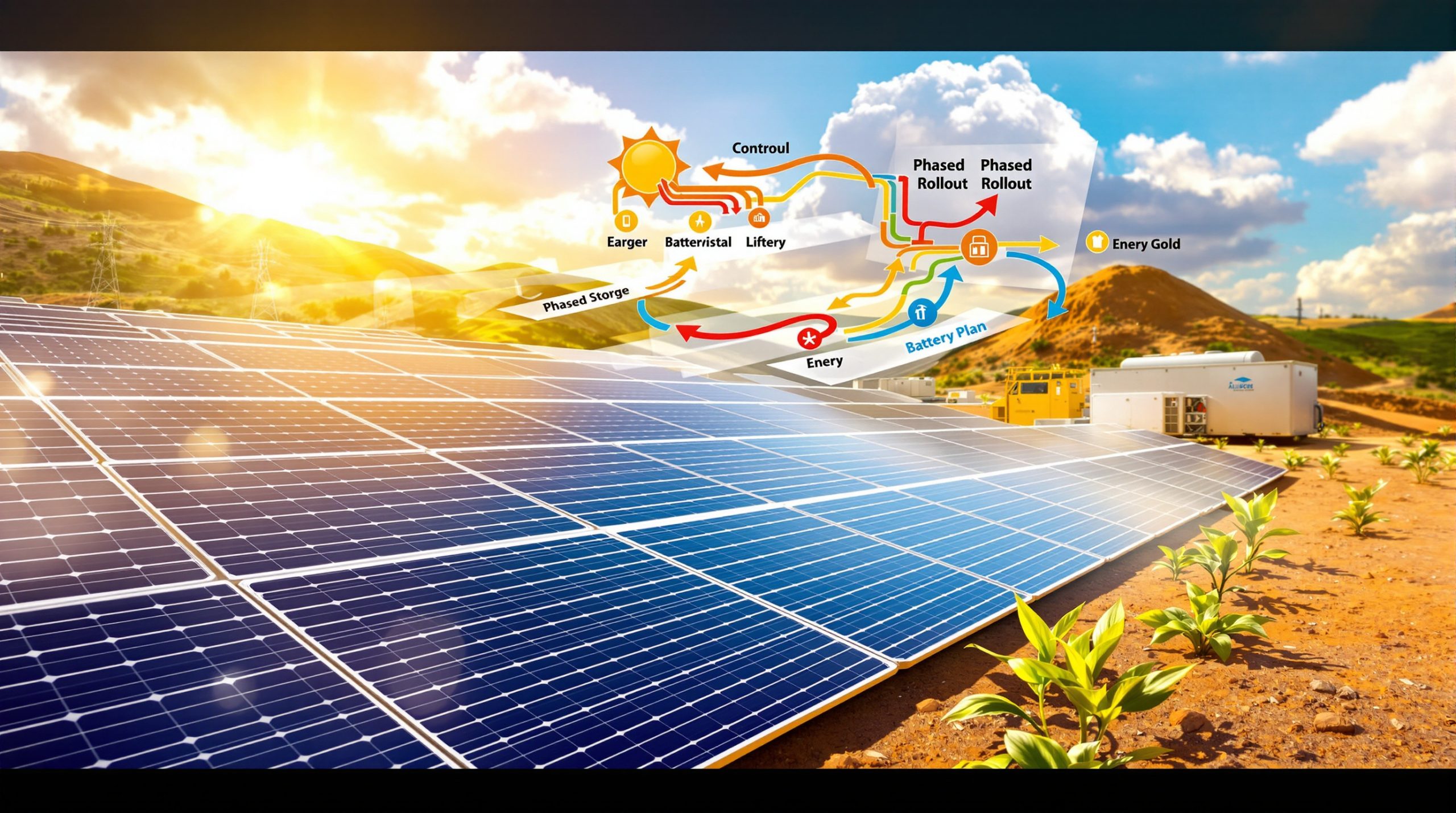Australia's Critical Minerals Strategy: The Future of US-Australia Resource Cooperation
Australia stands poised to showcase its critical minerals capabilities on the global stage as international demand for these essential resources continues to grow. With its abundant reserves of lithium, rare earth elements, and other strategic minerals, Australia has positioned itself as a key player in securing global supply chains for these increasingly vital commodities.
The Strategic Importance of Critical Minerals Diplomacy
The relationship between Australia and the United States in the critical minerals sector represents a significant opportunity for bilateral cooperation. As both nations seek to reduce dependence on concentrated supply chains, Australia's vast mineral resources and technical expertise create natural synergies for collaboration.
"Critical minerals have become the cornerstone of modern economies and defense systems," notes Dr. Ryan Wilson, a minerals policy expert at the Australian National University. "The strategic importance of these resources cannot be overstated, particularly as nations seek to secure supply chains for clean energy technologies and national security applications."
Recent developments in international relations have placed energy transition and critical minerals at the forefront of diplomatic and economic discussions, with Australia's reserves becoming increasingly valuable to allies seeking reliable partners.
Why Critical Minerals Have Become Central to International Relations
National Security Priorities
Critical minerals have been explicitly recognized as vital to economic and national security across major economies. These essential resources power technologies ranging from clean energy systems and defense applications to consumer electronics and telecommunications infrastructure.
The United States has identified significant vulnerabilities in its critical minerals supply chains, with minimal domestic production capacity making it dependent on international sources. This has prompted increased focus on securing reliable supply partnerships with trusted allies like Australia.
According to the US Geological Survey's 2023 assessment, the United States remains import-dependent for more than 50% of its consumption of 47 mineral commodities, including many classified as critical minerals.
Australia's Position as a Critical Minerals Powerhouse
Australia ranks among the world's largest holders of critical metals such as lithium, cobalt, rare earth elements, and tungsten, alongside significant deposits of manganese, graphite, and vanadium—all crucial for modern technologies and the energy transition.
Key Australian critical minerals assets include:
- Lithium: Australia holds approximately 52% of global lithium reserves according to the US Geological Survey
- Rare Earth Elements: Significant deposits in Western Australia and Northern Territory
- Cobalt: The third-largest reserves globally
- Tungsten: Substantial resources in Tasmania and Northern Territory
- Graphite: Emerging projects across South Australia and Queensland
The nation's established mining expertise and infrastructure provide additional advantages in developing these resources responsibly and efficiently. Australia's geographic positioning as a trusted ally in the Indo-Pacific region further enhances its strategic importance in global mineral supply chains.
Australia's Financial Commitments to Critical Minerals Development
Strategic Resource Development Initiatives
Australia has committed substantial resources to maximize the strategic value of its critical mineral assets. The government has implemented various initiatives aimed at supporting exploration, processing capabilities, and supply chain development.
These investments focus on:
- Enhancing domestic processing capacity to capture greater economic value
- Supporting exploration activities to identify new deposits
- Developing integrated supply chains with allied nations
- Strategic positioning against dominant market players
The development of domestic processing capabilities represents a particularly significant opportunity, as it would allow Australia to move up the value chain from simply exporting raw materials to producing refined products ready for manufacturing applications.
Investment in Processing and Supply Chain Development
Australia's strategy extends beyond mere extraction to encompass the entire critical minerals value chain. By investing in processing facilities and technical capabilities, Australia aims to establish itself as an essential partner in global supply chains.
This approach includes:
- Research and development of cost-effective processing technologies
- Training programs to develop technical expertise in mineral processing
- Infrastructure investments to support processing facilities
- International partnerships to align production with market needs
These initiatives are designed to address the current reality that while Australia is rich in raw materials, much of the value-adding processing currently occurs overseas, particularly in China, which processes approximately 60% of global lithium and 90% of rare earth elements according to International Energy Agency data.
How Australian Companies Are Responding to International Critical Minerals Demand
Industry Engagement with International Partners
Australian mining companies have been proactively engaging with international stakeholders to position themselves as key suppliers in global critical minerals markets. These engagements focus on potential partnership arrangements, financial mechanisms to secure supply chains, and strategic alignments with international investment priorities.
"The most successful Australian companies in this space are those building relationships across the entire supply chain," explains mining analyst Rebecca Chen. "They're not just focusing on extraction, but understanding the needs of processors, manufacturers, and end-users."
Major Australian mining companies have significantly increased their critical minerals strategy pivot in recent years, with many expanding existing operations or developing new projects specifically targeted at meeting growing international demand.
Strategic Project Development Beyond Australia
Several Australian companies have strategically identified opportunities to develop critical mineral and rare earth element projects internationally, particularly in North and South America.
Companies such as Nova Minerals (ASX: NVA), Resolution Minerals (ASX: RML), and Magnum Mining & Exploration (ASX: MGU) have attracted investor and industry attention with their focus on developing high-grade projects strategically located near major markets.
These companies are positioning themselves to benefit from increased international investment in critical minerals by:
- Developing projects in jurisdictions with favorable regulatory environments
- Focusing on high-grade deposits with economic viability
- Establishing processing partnerships to secure offtake arrangements
- Implementing sustainable and responsible mining practices
This international expansion strategy allows Australian companies to leverage their technical expertise while diversifying their geographic footprint.
What Makes Critical Minerals Essential to Modern Technology and Security
Applications Across Strategic Sectors
Critical minerals form the foundation of numerous technologies essential to modern economies and security systems. Their unique properties make them irreplaceable in many applications:
- Clean Energy Technologies: Lithium, cobalt, and nickel for batteries; rare earth elements for permanent magnets in wind turbines; silicon and tellurium for solar panels
- Defense Systems: Rare earth elements for precision-guided weapons and radar systems; titanium and specialty alloys for aerospace applications
- Consumer Electronics: Tantalum for capacitors; indium for touchscreens; rare earth elements for speakers and vibration motors
- Electric Vehicles: Lithium, nickel, and manganese for batteries; rare earth magnets for motors; graphite for battery anodes
- Advanced Manufacturing: Tungsten for cutting tools; molybdenum for high-temperature applications; vanadium for specialty steel alloys
The International Energy Agency reports that electric vehicle batteries require approximately six times more minerals than conventional cars, while wind turbines require 3-5 times more minerals than gas-fired power plants, highlighting the mineral intensity of the clean energy transition.
Supply Chain Vulnerabilities
The global critical minerals supply chain faces several significant vulnerabilities:
- Geographic Concentration: Production and processing are highly concentrated in specific regions, creating vulnerability to disruptions
- Processing Bottlenecks: Refining and processing capacity is even more concentrated than mining, with China dominating many processing streams
- Price Volatility: Critical mineral markets often experience significant price swings due to supply-demand imbalances
- Geopolitical Tensions: Rising international tensions create risks for mineral supply chains crossing multiple jurisdictions
- Environmental and Social Governance Challenges: Mining operations face increasing scrutiny regarding environmental impacts and labor practices
These vulnerabilities have prompted nations to develop strategies for securing more resilient supply chains, often by diversifying sources and investing in domestic capabilities.
International Approaches to Critical Minerals Security
Contrasting Approaches to Critical Minerals Security
Different nations and regions have adopted varying strategies to address critical minerals security:
| Region/Country | Strategic Approach | Key Mechanisms | Focus Areas |
|---|---|---|---|
| United States | Direct investment and strategic partnerships | Defense Production Act funding, strategic stockpiling | Lithium, cobalt, rare earths, graphite |
| European Union | Regulatory framework and industry support | Critical Raw Materials Act, European Raw Materials Alliance | Battery materials, rare earths, magnesium |
| Japan | Resource diplomacy and technological innovation | Strategic stockpiling, overseas development assistance | Rare earths, lithium, cobalt |
| Canada | Critical Minerals Strategy with neighbor cooperation | Canada-US Joint Action Plan, Critical Minerals Centre of Excellence | Nickel, cobalt, lithium, uranium |
| Australia | Value-added processing development and international partnerships | Critical Minerals Facilitation Office, various funding initiatives | Lithium, rare earths, cobalt, tungsten |
Each approach reflects the unique resource endowments, industrial bases, and strategic priorities of the implementing nations.
Multilateral Cooperation Frameworks
Several multilateral frameworks have emerged to address critical minerals challenges:
- Quad Alliance Discussions: Australia, Japan, India, and the United States have incorporated supply chain resilience for critical minerals into their cooperative agenda
- G7 Initiatives: Developed economies have coordinated on critical minerals security measures and standards
- International Energy Agency: Provides analysis and recommendations for diversification of critical mineral supply chains
- Minerals Security Partnership: A coalition of countries working to catalyze public and private investment in critical minerals projects
These multilateral efforts aim to coordinate national approaches and leverage collective resources to address shared challenges in critical minerals supply chains.
Economic Benefits of Enhanced Critical Minerals Cooperation
Potential Economic Impacts for Australia
Expanding critical minerals development and processing could deliver significant economic benefits for Australia:
- Export Revenue Growth: Refined critical minerals products command higher prices than raw ores
- Job Creation: Processing facilities create higher-skilled, better-paying jobs than mining alone
- Regional Development: Many critical minerals projects are located in regional areas, bringing economic opportunities to these communities
- Technology Transfer: Partnerships with international technology providers can enhance Australia's technical capabilities
- Diversified Economy: Expanding into mineral processing reduces dependence on commodity price cycles
Economic modeling by the Perth USAsia Centre suggests that developing domestic processing for lithium alone could increase the value of Australia's exports by 400%, while creating thousands of additional jobs.
Value-Added Processing Opportunities
The most significant economic opportunity lies in moving up the value chain from mining to processing and component manufacturing:
- Battery Materials Processing: Converting lithium ore to battery-grade lithium hydroxide or lithium carbonate
- Rare Earth Separation: Developing capability to separate mixed rare earth concentrates into individual elements
- Precursor Production: Manufacturing cathode and anode precursors for battery production
- Component Manufacturing: Producing battery components, magnets, and other high-value products
- Recycling Capability: Developing technology to recover critical minerals from end-of-life products
Each step up the value chain multiplies the economic value of Australia's mineral resources, though it also requires increasing levels of technical expertise and capital investment.
Challenges in Developing Critical Minerals Cooperation
Implementation Hurdles
Despite the compelling strategic and economic case for critical minerals development, several significant challenges must be addressed:
- Environmental Permitting: Mining and processing facilities face rigorous environmental review processes
- Infrastructure Requirements: Many projects require significant investments in power, water, and transportation infrastructure
- Technical Expertise: Processing facilities demand specialized technical knowledge that must be developed
- Capital Intensity: Critical minerals projects require substantial upfront investment before generating returns
- Market Uncertainty: Fluctuating prices create challenges for long-term investment planning
Environmental Consideration: Critical minerals processing typically involves chemical processes that can generate significant waste streams and emissions if not properly managed. Implementing best practices in environmental management is essential for sustainable industry development.
Competitive Landscape Considerations
The global competitive landscape presents additional challenges:
- China's Established Dominance: China has developed significant processing capacity and technical expertise over decades
- Price Competition: Heavily subsidized operations in some countries can undercut new entrants
- Technology Gaps: Certain processing methods represent proprietary knowledge not readily available to new market participants
- Shifting End-User Requirements: Manufacturers continually evolve specifications, creating moving targets for processors
These competitive factors necessitate strategic approaches that leverage Australia's unique advantages while acknowledging the realities of the global marketplace.
Shaping Future Resource Cooperation
Strategic Framework for Cooperation
Effective international cooperation on critical minerals requires a comprehensive framework addressing multiple dimensions:
- Policy Coordination: Alignment of regulatory approaches and standards
- Investment Mechanisms: Joint funding initiatives and risk-sharing arrangements
- Research Collaboration: Shared research programs on processing technologies and recycling
- Workforce Development: Exchange programs and specialized training initiatives
- Market Development: Coordinated approach to developing market demand for ethically sourced minerals
Such frameworks would create the foundation for long-term cooperation that extends beyond individual projects to systematic transformation of critical minerals supply chains.
Long-Term Strategic Implications
The development of resilient critical minerals supply chains has implications that extend far beyond the mining sector:
- Reshaping Global Supply Networks: Creating alternative supply pathways reduces vulnerability to disruption
- Establishing New Industry Standards: Cooperation can define environmental and social governance benchmarks
- Developing Alternative Processing Capacity: New facilities reduce dependence on concentrated processing hubs
- Strengthening Strategic Partnerships: Resource cooperation deepens broader security and economic relationships
These long-term implications underscore the strategic importance of critical minerals as more than mere commodities, but as essential elements of economic security and technological sovereignty.
FAQ: Critical Minerals Cooperation
What critical minerals are most important to international partnerships?
The most strategically significant critical minerals include lithium, cobalt, rare earth elements, tungsten, manganese, graphite, and vanadium. These minerals are essential for advanced technologies, clean energy systems, and defense applications. Of these, rare earth elements (particularly heavy rare earths) and battery minerals like lithium and cobalt have received the most attention due to their importance in emerging technologies and current supply chain concentration.
What are the main applications driving critical minerals demand?
Clean energy technologies represent the fastest-growing source of demand, particularly batteries for electric vehicles and energy storage. Defense systems, consumer electronics, and advanced manufacturing also drive significant demand. The International Energy Agency projects that demand for key minerals used in clean energy technologies could increase by 400-600% by 2040, depending on how rapidly the world transitions to low-carbon energy systems.
What are the environmental considerations for critical minerals development?
Critical minerals projects must address several environmental challenges, including water usage, energy consumption, waste management, and habitat disruption. Advanced processing technologies often require significant chemical inputs and generate waste streams that must be carefully managed. Many projects are developing innovative approaches to minimize environmental impacts, including water recycling, renewable energy utilization, and waste valorization.
How can critical minerals supply chains become more resilient?
Resilience requires diversification across multiple dimensions: geographic diversification of mining operations, development of processing capacity in multiple regions, technological innovation to reduce dependence on specific minerals, improved recycling capabilities, and strategic stockpiling of essential materials. No single approach can create resilience; rather, a combination of these strategies is necessary.
The Future of Global Critical Minerals Supply Chains
The development of reliable, ethical, and sustainable critical minerals supply chains represents one of the most significant challenges and opportunities in the global transition to clean energy and advanced manufacturing. Australia's abundant resources, technical expertise, and strategic positioning make it a natural partner for nations seeking to secure access to these essential materials.
As international cooperation in this sector continues to evolve, successful partnerships will be those that address the full spectrum of challenges—from mining and processing to environmental protection and community engagement. By taking a comprehensive approach to critical minerals strategic reserve development, Australia and its international partners can create supply chains that not only meet immediate needs but establish a foundation for long-term technological and economic security.
The nations that successfully navigate these challenges will gain significant advantages in industrial competitiveness, technological innovation, and strategic independence in the decades ahead. With its world-class resources and growing technical capabilities, Australia is well-positioned to play a central role in this critical transformation of global supply chains. Furthermore, ongoing mining industry innovations and mineral beneficiation opportunities will continue to strengthen Australia's position in the Australian critical minerals at White House meeting discussions.
Want to Discover the Next Major Australian Critical Mineral Stock?
Stay ahead of the critical minerals boom with real-time alerts on significant ASX discoveries, powered by Discovery Alert's proprietary Discovery IQ model. Visit the Discovery Alert discoveries page to see how major mineral finds have generated substantial returns and position yourself to capitalise on Australia's critical minerals advantage.




